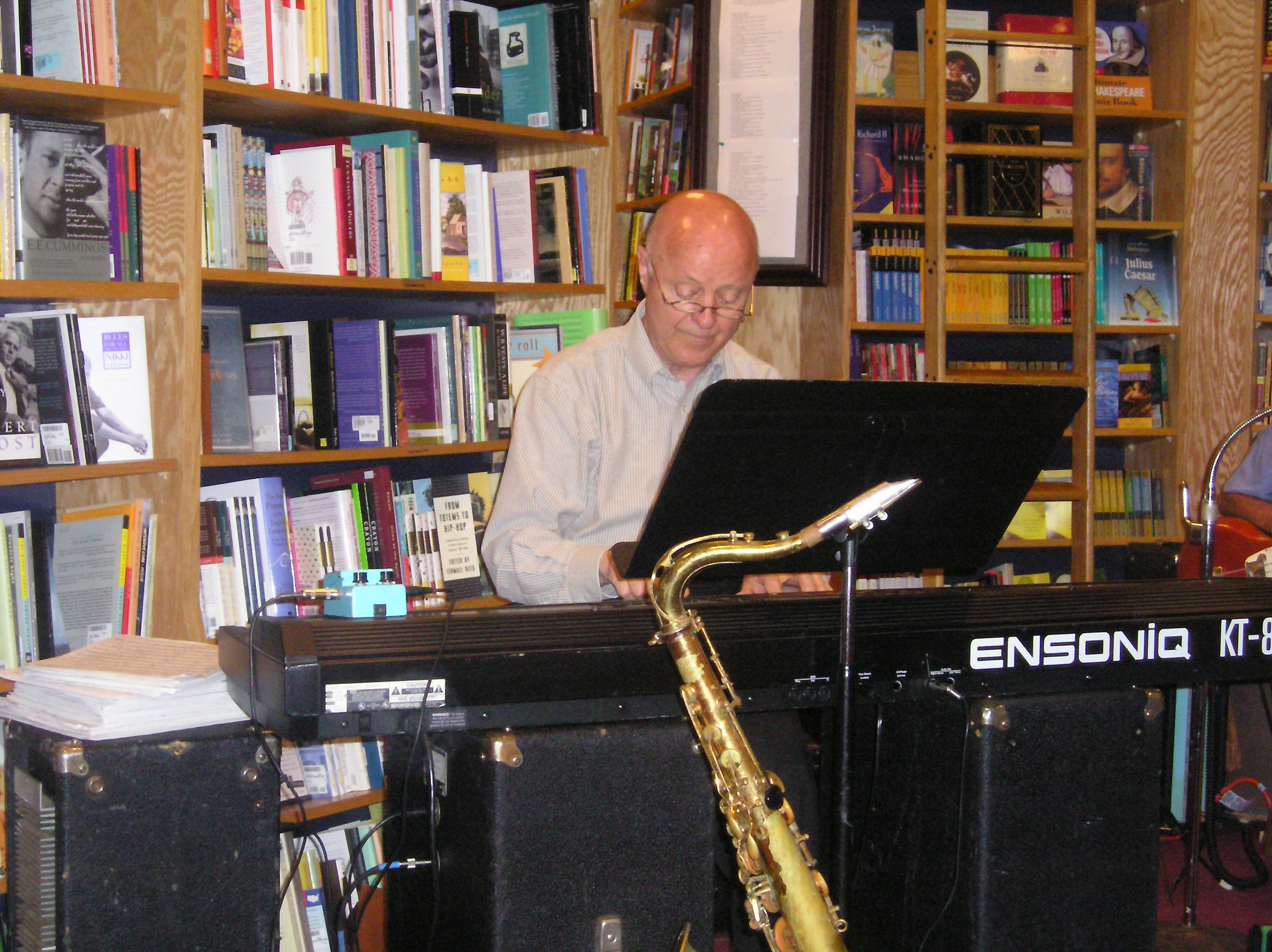I grew up low-church Protestant, so the concept of an Eastertide season (or 50 days of Easter) was as foreign to me as the notion that the 12 Days of Christmas commence (and don’t end) on Christmas day. (If my graduate studies in worship did nothing more for me than give me a healthy appreciation of the benefits of following the liturgical calendar, my money would have been well spent.) So although I could claim I’m simply highlighting the third day of Easter with this post, I’ll concede to the prevailing low-church notion that Lent and Easter are in the rearview mirror now, and to drag them up means hearkening back to a previous season, albeit recent, as opposed to continuing in the richness of what God does in, with, and through us over the next 47 days. So be it.
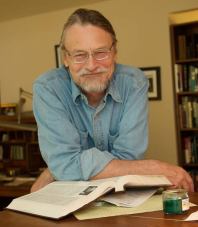 I have been using the late Walter Wangerin’s Advent collection, Preparing for Jesus, for a while now, but although I’ve also had his Lenten compilation, Reliving the Passion, on my shelf, I have never read it until this year. Wangerin, who was a Lutheran pastor and a writer-in-residence at Valparaiso University, has always been thought-provoking for me, and Reliving the Passion did not disappoint. The entire book is worth the read, but a few reflections stood out, none more, well, powerful than the one for Tuesday, the 18th day of Lent, for which the Scripture passage reflected upon was Mark 14:61-62:
I have been using the late Walter Wangerin’s Advent collection, Preparing for Jesus, for a while now, but although I’ve also had his Lenten compilation, Reliving the Passion, on my shelf, I have never read it until this year. Wangerin, who was a Lutheran pastor and a writer-in-residence at Valparaiso University, has always been thought-provoking for me, and Reliving the Passion did not disappoint. The entire book is worth the read, but a few reflections stood out, none more, well, powerful than the one for Tuesday, the 18th day of Lent, for which the Scripture passage reflected upon was Mark 14:61-62:
He was silent and made no answer. Again the high priest asked him, “Are you the Christ, the Son of the Blessed?” And Jesus said, “I am; and you will see the Son of man seated at the right hand of Power and coming with the clouds of heaven.”
After reminding readers that time and time again, in the early part of his ministry and especially after performing miracles, Jesus “charged those who experienced his power to say nothing about it,” Wangerin highlights the difference in Jesus’ response in front of the high priest:
Even when Peter, James, and John saw his celestial glory in the transfiguration–saw Jesus revealed as the fulfillment of the Old Testament–he told them to shut up.
The world would have misunderstood the glory.
The world would have expected a warrior-king, someone triumphant in its own terms. A winner, you know. A number-one, against-all-odds, pride-inspiring, tear-in-my-eye, flat-out, all-around, good-guy winner! A hero.
Only when that characterization is rendered absurd and impossible does Jesus finally accept the title “Christ.”
Christian, come and look closely: it is when Jesus is humiliated, most seeming weak, bound and despised and alone and defeated that he finally answers the question, “Are you the Christ?”
Now, for the record, yes: I am.
And then, a few sentences later, as if his late 20th-century musings were presaging events in America 30 years later, Wangerin writes this:
What then of our big churches, Christian? What of our bigger parking lots, our rich coffers, our present power to change laws in the land, our political clout, our glory for Christ, our triumphant and thundering glory for Christ? It is excluded! All of it. It befits no Christian, for it was rejected by Jesus.
If ever we persuade the world (our ourselves) that we have a hero in our Christ, then we have lied. Or else we are deceived, having accepted the standards of the world.
To be in the world and not of it–so much easier said than done. (Continued) Happy Easter!
The Lord be with you!

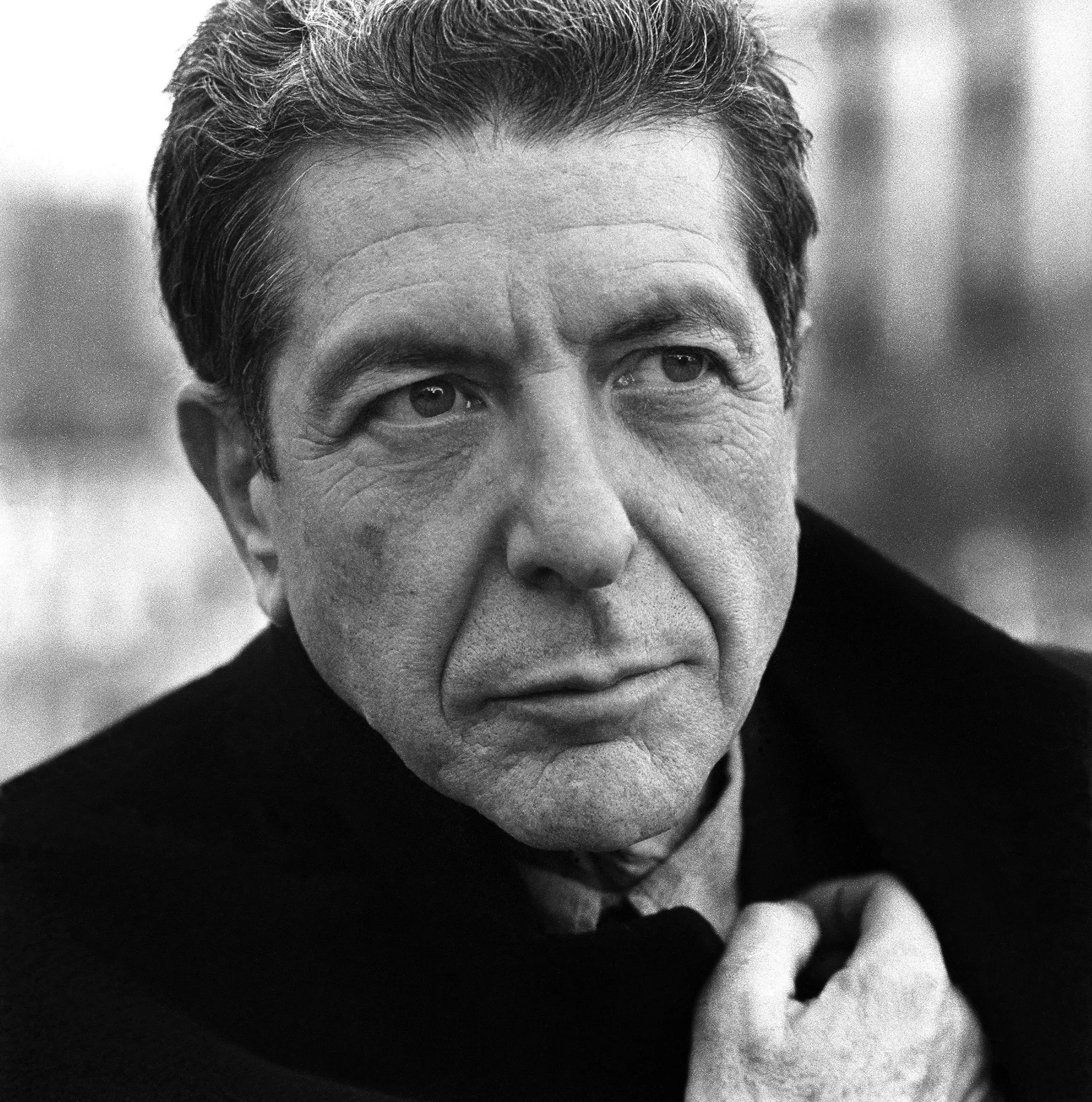 I’d like the passage to 60 to go more smoothly, so I’m gearing up for it more intentionally. As I thought about how to get through the next week and a half relatively unscathed, I was reminded of some guidance I had received from an old friend in the midst of grieving my dad’s death. My relationship with singer/songwriter Leonard Cohen was, to be sure, one-sided (we never met), and it came on rather late in his life; as was the case with Johnny Cash, Bob Dylan, Neil Young, and all the old gutbucket African-American bluesmen from the 1920s-1940s, I couldn’t, in my bel canto snobbery, get past Cohen’s vocal quality, or lack thereof, completely missing the McLuhanesque truth that his tonal quality is, in many ways, his message. When I finally subjected Cohen to the same deep-dive I had given Dylan 15 years earlier, I rose from those waters a convert.
I’d like the passage to 60 to go more smoothly, so I’m gearing up for it more intentionally. As I thought about how to get through the next week and a half relatively unscathed, I was reminded of some guidance I had received from an old friend in the midst of grieving my dad’s death. My relationship with singer/songwriter Leonard Cohen was, to be sure, one-sided (we never met), and it came on rather late in his life; as was the case with Johnny Cash, Bob Dylan, Neil Young, and all the old gutbucket African-American bluesmen from the 1920s-1940s, I couldn’t, in my bel canto snobbery, get past Cohen’s vocal quality, or lack thereof, completely missing the McLuhanesque truth that his tonal quality is, in many ways, his message. When I finally subjected Cohen to the same deep-dive I had given Dylan 15 years earlier, I rose from those waters a convert.  To illustrate the latter, Dad shows a clip of the early 70s Nashville sessions featuring the (perceived) conservative Johnny Cash and the (perceived) liberal (Bob Dylan), captured here singing Dylan’s “One Too Many Mornings.” (History has shown that, in truth, neither artist was as beholden to the political poles as had been assumed, the clues for which were there if anyone wanted to look for them.) We also hear some excellent voice-over commentary from the fabulous bluegrass banjoist Earl Scruggs, extolling the virtues of trying out new ideas, while his new band, featuring his sons on various instruments not usually associated with bluegrass, plays a rollicking “newgrass” tune in the background. I hope you enjoy this
To illustrate the latter, Dad shows a clip of the early 70s Nashville sessions featuring the (perceived) conservative Johnny Cash and the (perceived) liberal (Bob Dylan), captured here singing Dylan’s “One Too Many Mornings.” (History has shown that, in truth, neither artist was as beholden to the political poles as had been assumed, the clues for which were there if anyone wanted to look for them.) We also hear some excellent voice-over commentary from the fabulous bluegrass banjoist Earl Scruggs, extolling the virtues of trying out new ideas, while his new band, featuring his sons on various instruments not usually associated with bluegrass, plays a rollicking “newgrass” tune in the background. I hope you enjoy this 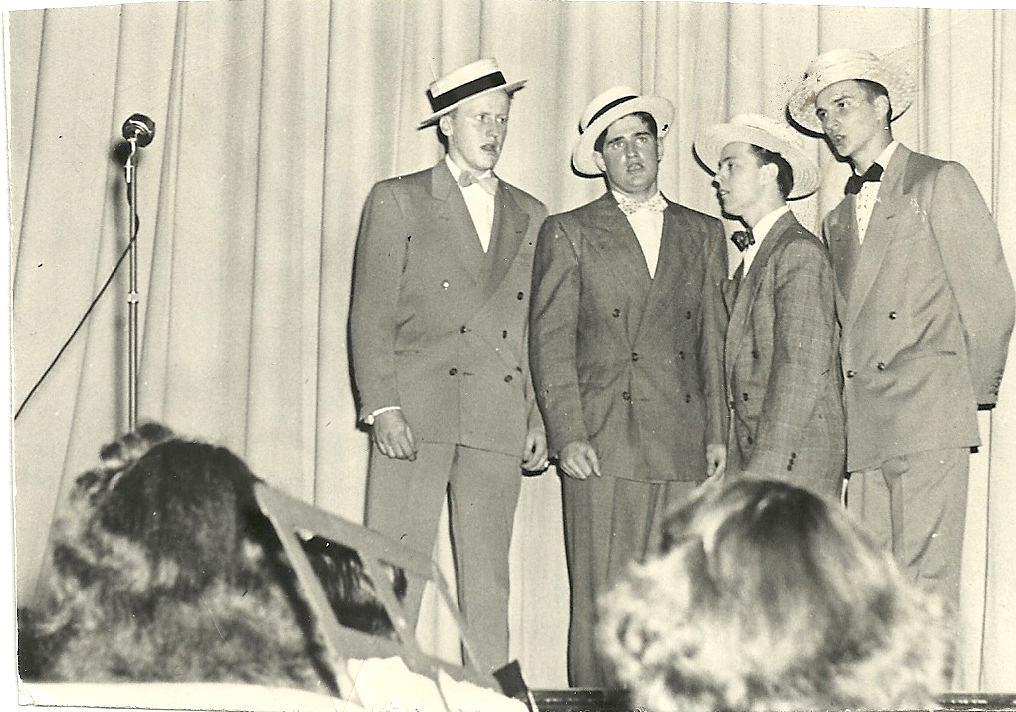
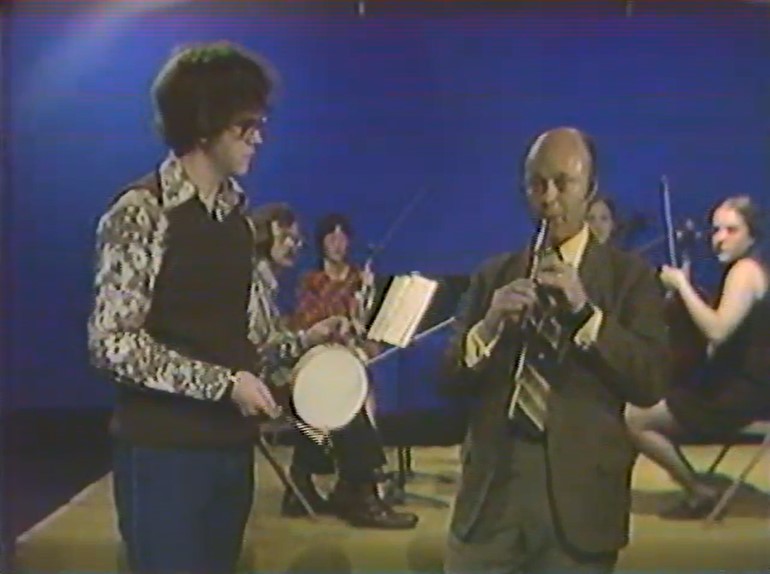
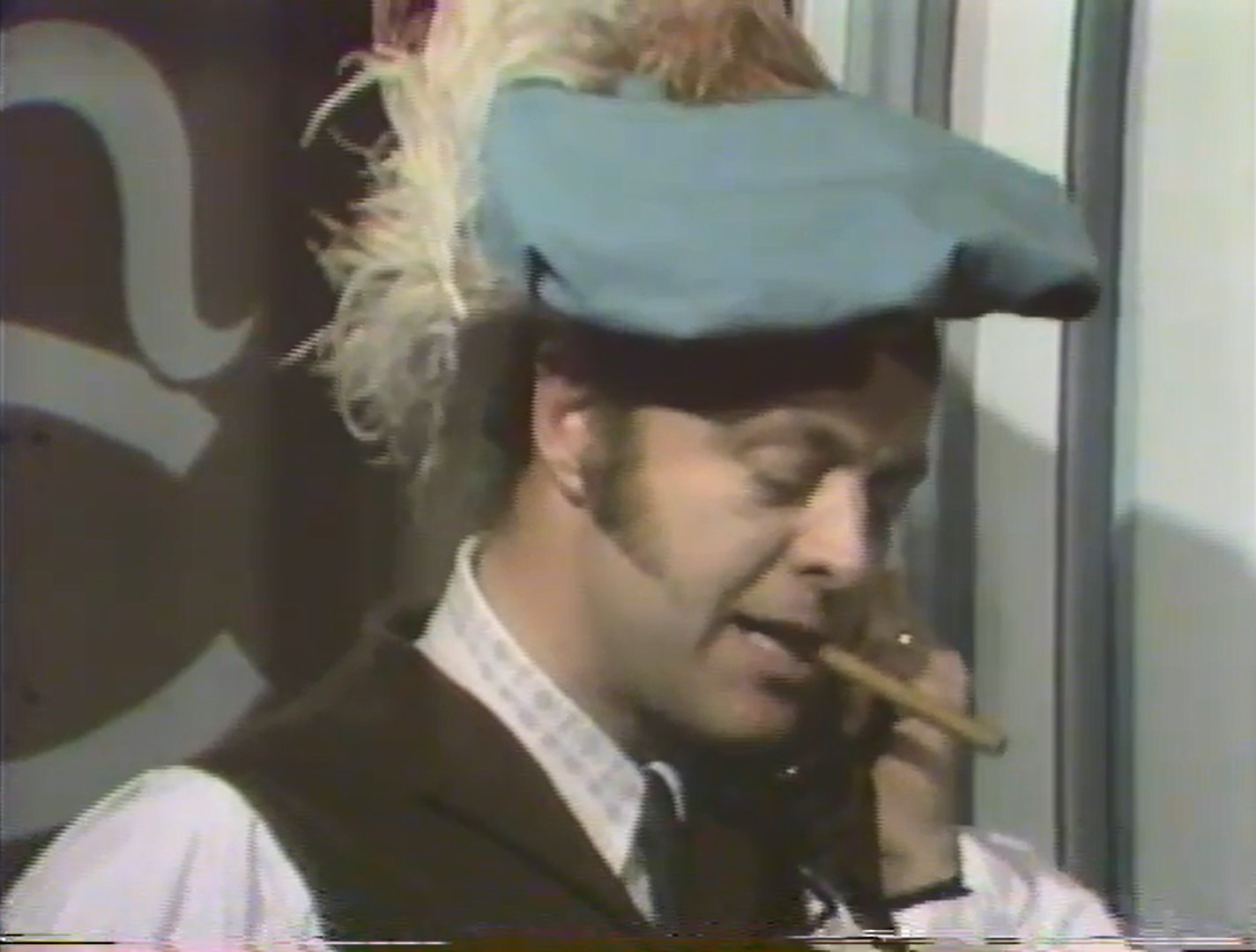
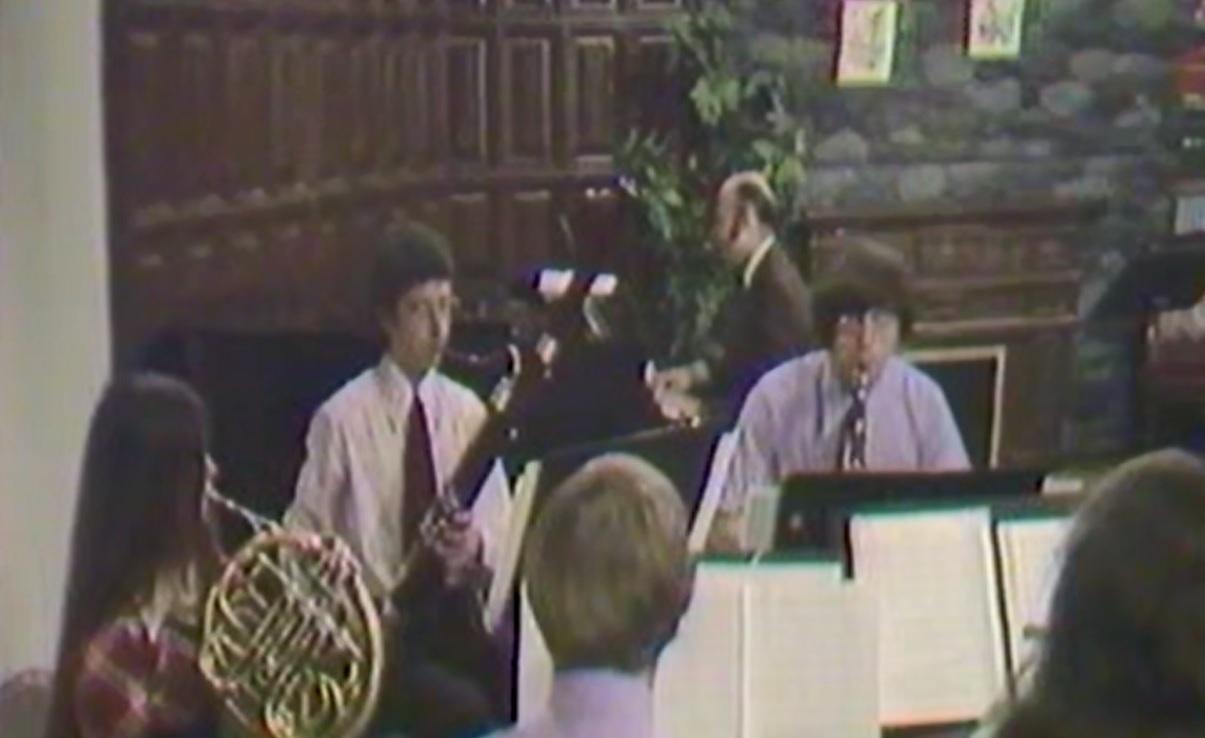
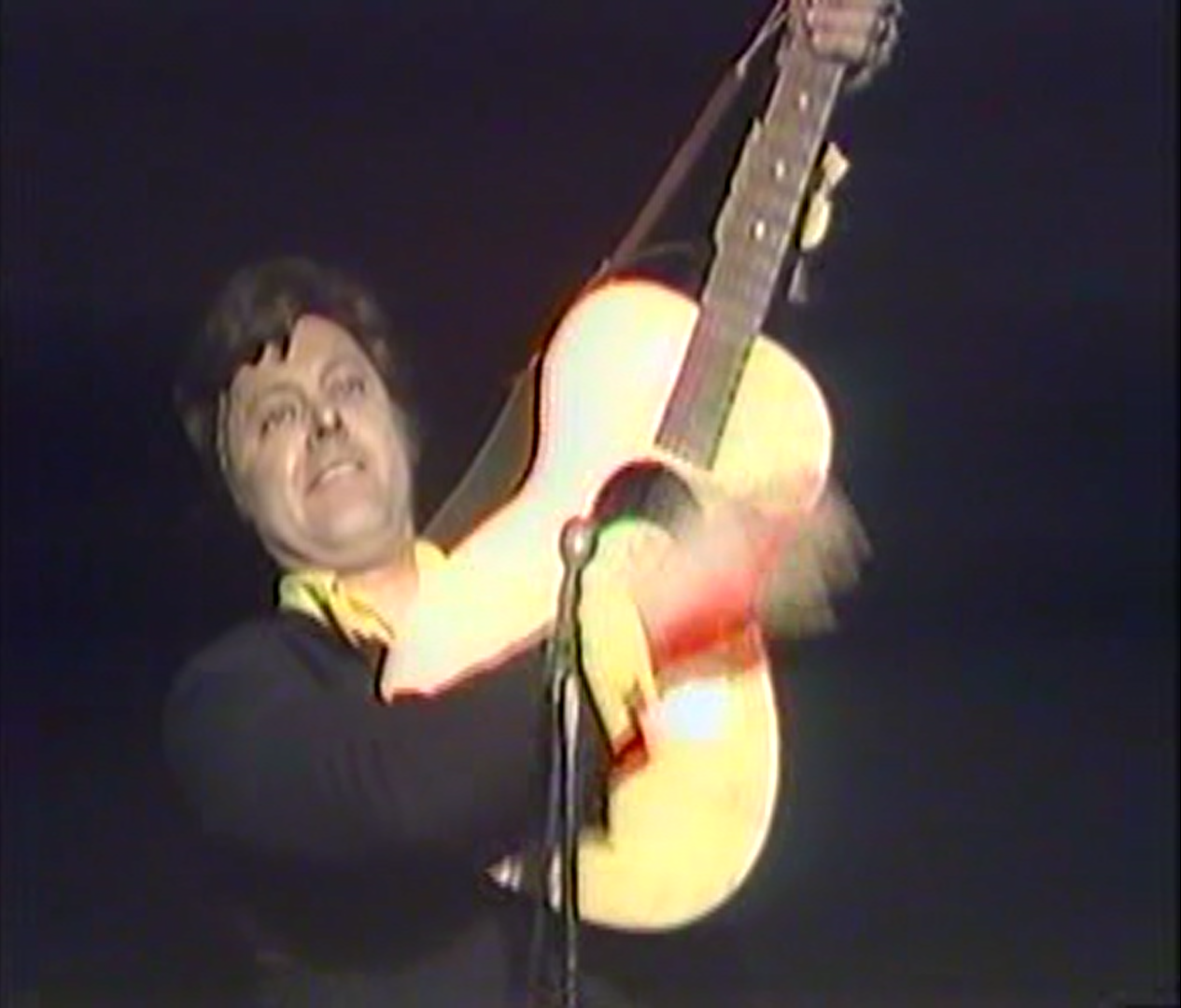
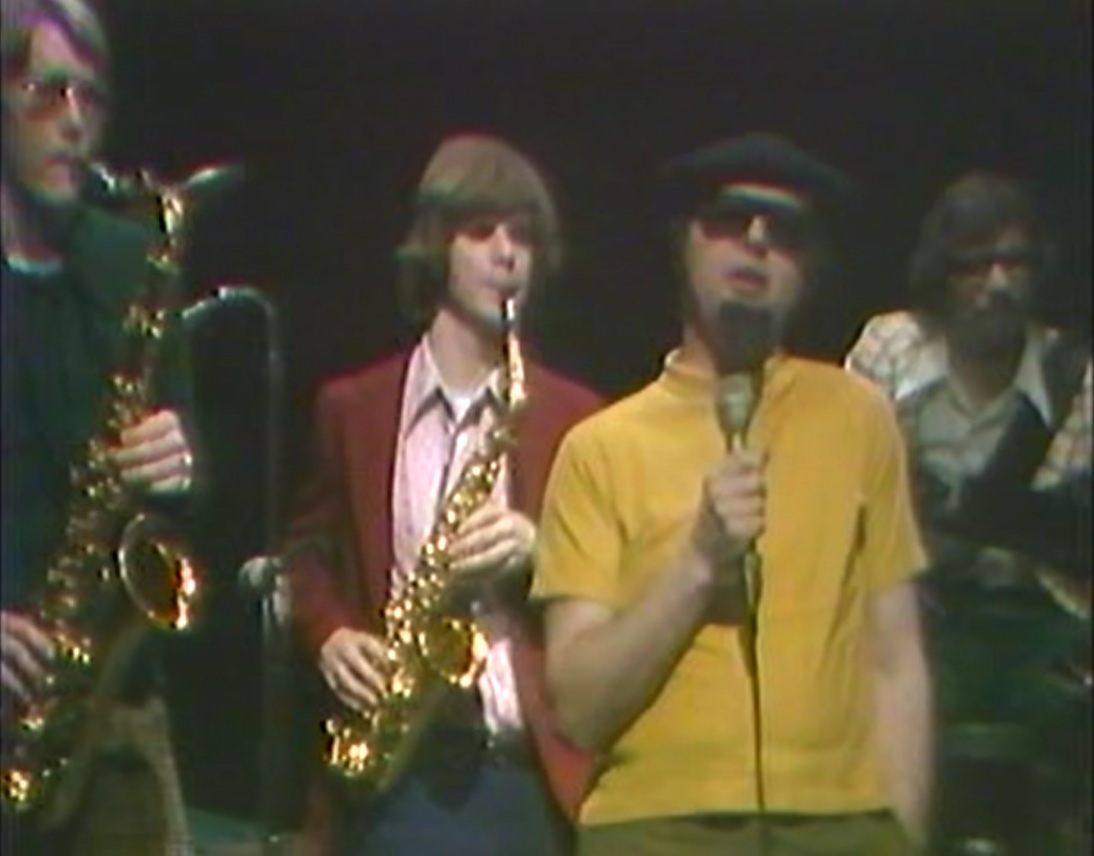


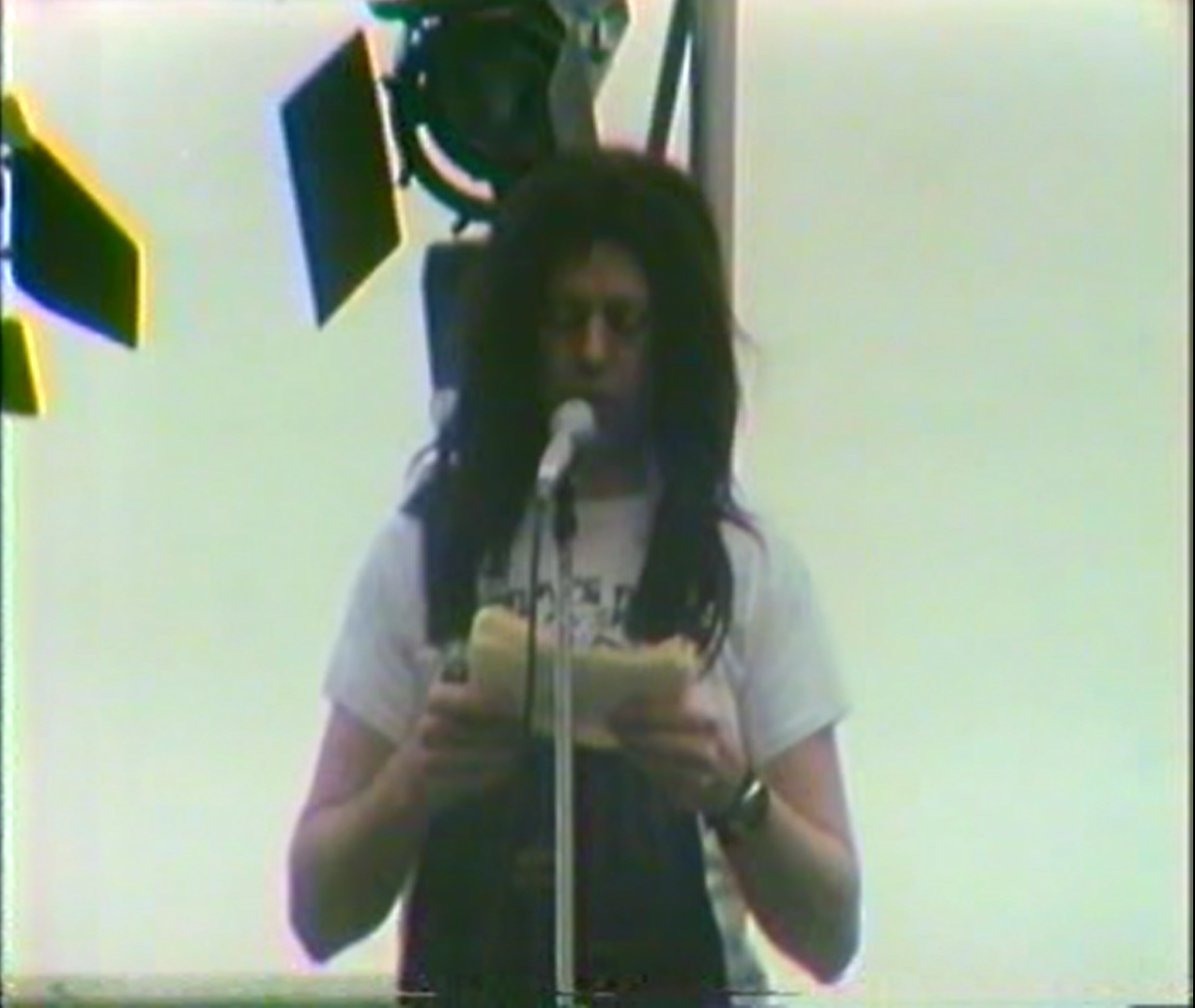
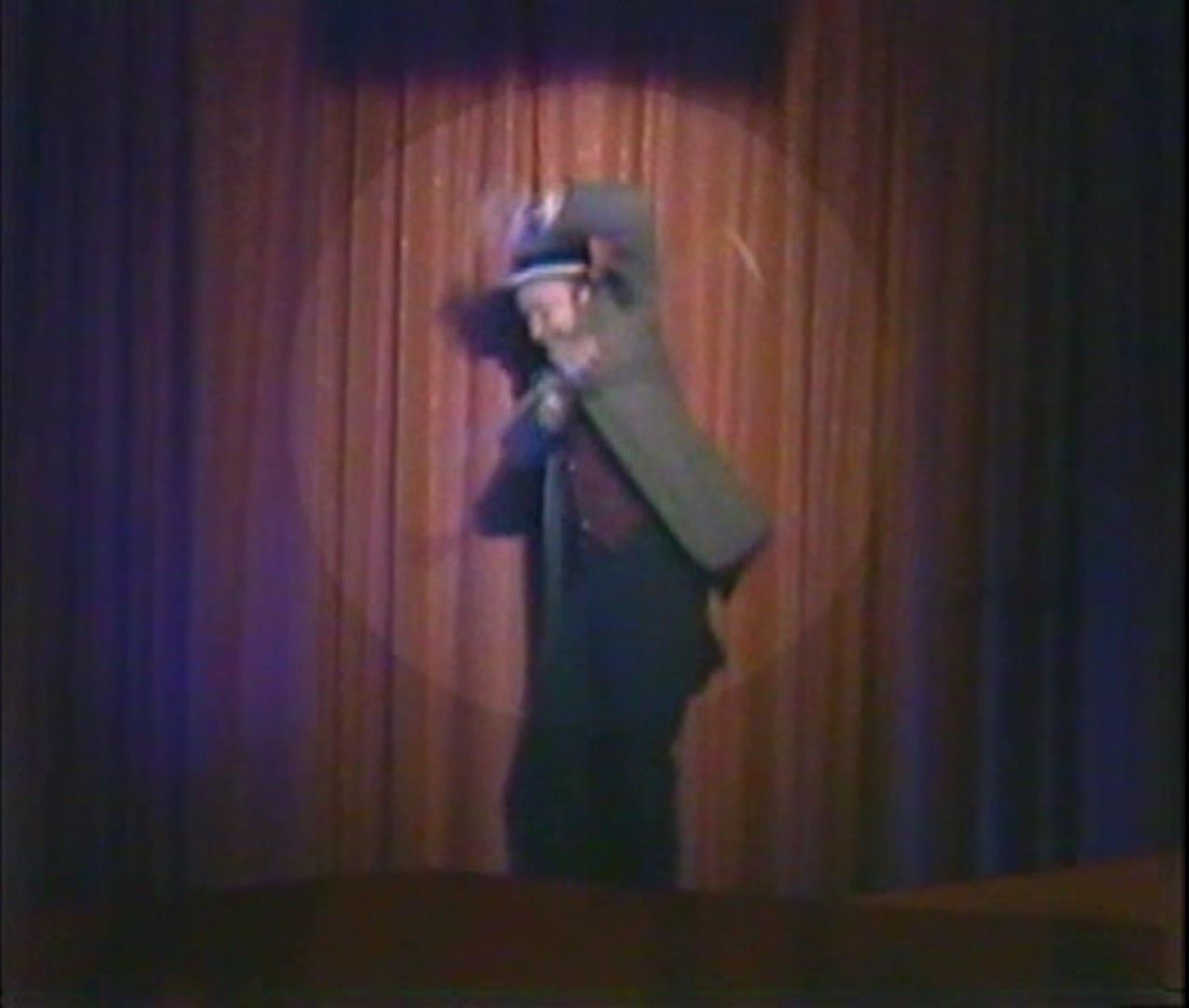 Having covered an introduction to pop music, country music, and jazz in the first five episodes, Dad now turns his attention to what he calls mainstream pop, middle-of-the-road fare that encompasses everything from Vaudeville to Broadway. After the Tonight Show-esque cold opening, in which he plays a fierecely heckled Vaudeville perfomer, he begins the meat of the show by articulating five traits of successful mainstream peformers and then moves into some of his bread-and-butter analysis of the socio-economic factors at work that make the creation of West Side Story, for example, impossible to conceive as a story set in Nebraska. This was Dad’s forte, creating sweeping generalizations that helped students get a handle on the huge world of music. Later he accompanies on the piano two vocal grad students who sing examples of Broadway tunes, “I Got Plenty o’ Nuttin’,” from Porgy and Bess, and “Can’t Help Lovin’ Dat Man,” from Showboat.
Having covered an introduction to pop music, country music, and jazz in the first five episodes, Dad now turns his attention to what he calls mainstream pop, middle-of-the-road fare that encompasses everything from Vaudeville to Broadway. After the Tonight Show-esque cold opening, in which he plays a fierecely heckled Vaudeville perfomer, he begins the meat of the show by articulating five traits of successful mainstream peformers and then moves into some of his bread-and-butter analysis of the socio-economic factors at work that make the creation of West Side Story, for example, impossible to conceive as a story set in Nebraska. This was Dad’s forte, creating sweeping generalizations that helped students get a handle on the huge world of music. Later he accompanies on the piano two vocal grad students who sing examples of Broadway tunes, “I Got Plenty o’ Nuttin’,” from Porgy and Bess, and “Can’t Help Lovin’ Dat Man,” from Showboat.